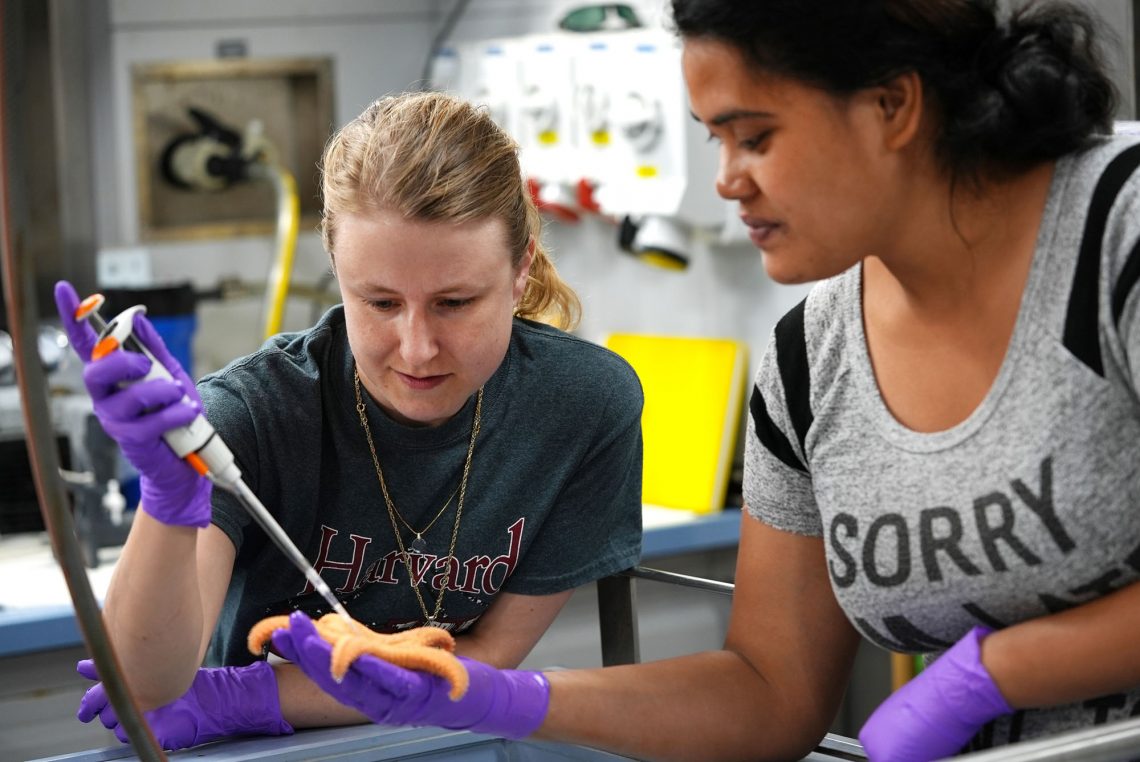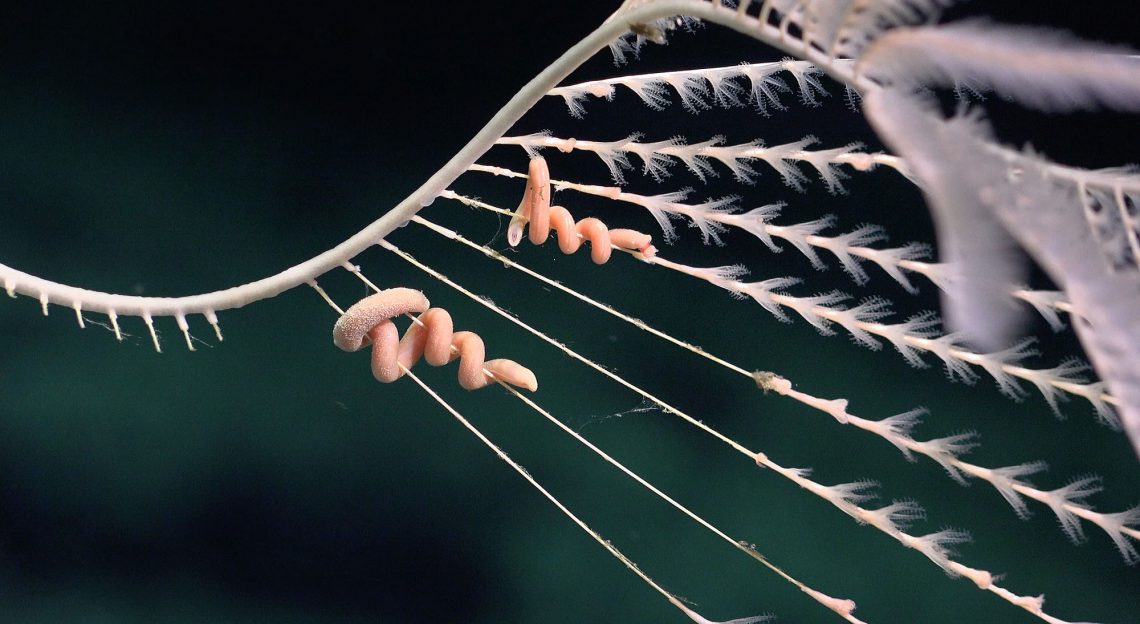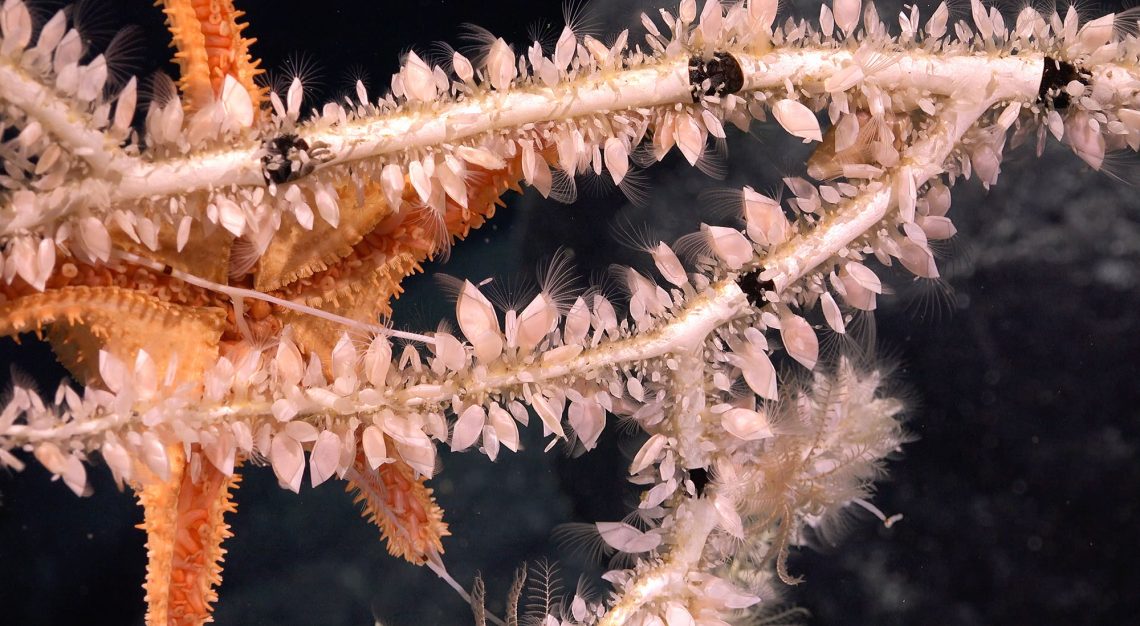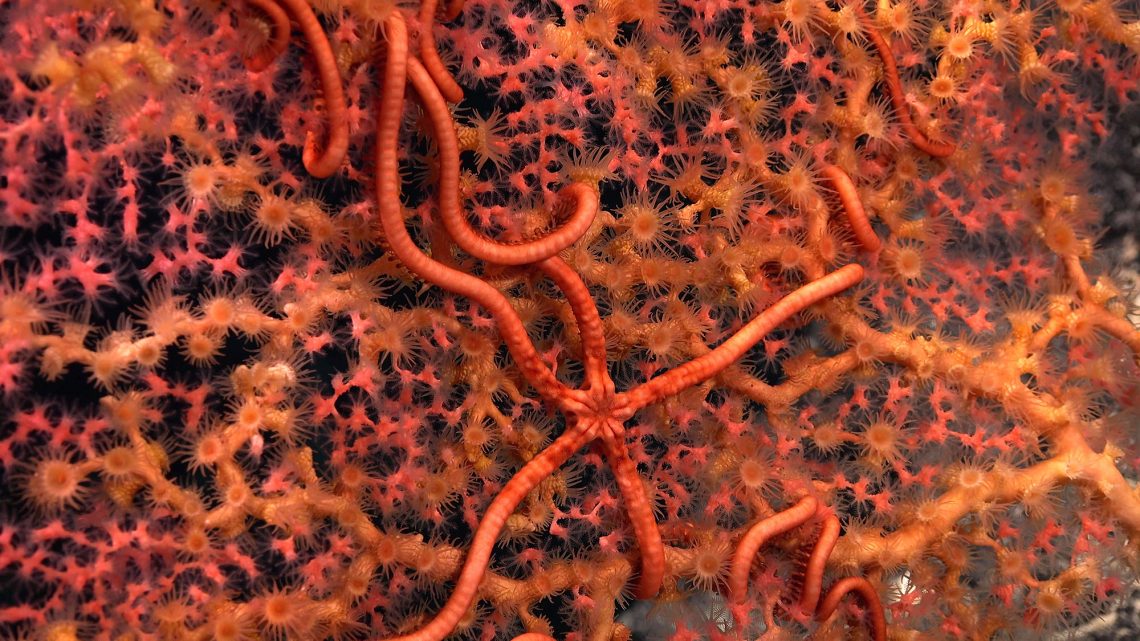Ahoy and greetings from the R/V Falkor! My name is Anna Gauthier, and I am a graduate student finishing my Ph.D. at Harvard University under the mentorship of Jon Kagan (Harvard) and Randi Rotjan (Boston University). This is my second research cruise on the R/V Falkor with Schmidt Ocean Institute to the Phoenix Islands Archipelago. In 2017, I traveled with our team to the Phoenix Islands Protected Area (PIPA) in Kiribati to explore the deep sea in this region for the first time in modern history. Now in 2021, our group is back to study the northern region of the archipelago to follow up on the questions generated from this first expedition.
In graduate school, the overarching goal of my research has been to determine whether multicellular organisms – from mammals to deep-sea corals – detect and respond to microbes in the same way. In other words: is immunity locally or globally defined? In 2017, we asked the question as to whether or not mammals (humans and mice) could detect bacteria they would never have the natural opportunity to encounter, specifically from those from the deep sea. These bacteria were cultured from various animals and substrates collected in PIPA, from sea star stomachs to sandy sediment to coral tissue.

Surprisingly, the answer to whether mammals could detect or “see” these bacteria was often NO! In fact, 80% of the bacteria strains we tested from the deep sea did not interact with mammalian receptors located outside our cells, whose job is to detect all bacteria. When we drilled down to why many of these bacteria were unseen by the mammalian immune system, it turned out that their outer membranes were a different structure than those found on land. Although it was intuitive that deep-sea bacteria may have different membrane structures, we did not anticipate these structures to render these bacteria silent to the cellular receptors possessed by mammals that are responsible for detecting the bacterial outer membrane.

The conclusions made in this study were a bit of a shock to me, given that a central tenet in the field of innate immunity is that all multicellular organisms should be able to recognize and respond to all foreign microbes, because these microbes have the potential to be harmful if undetected and unchecked. Not to worry, though! We have recently confirmed that even though these bacteria have outer membranes that mammals cannot detect, they possess other foreign bits of material (such as DNA and RNA) that will eventually be recognized by our cells and will alert our immune system to their presence.

Now, in 2021, we are flipping the question to ask whether deep-sea corals have the ability to recognize bacteria from their own environment as well as bacteria from the terrestrial world. Thanks to the Schmidt Ocean Institute, we have the ability to test the immune response of live deep-sea corals in real-time aboard the Falkor. These types of experiments have not been done before. They are fascinating because they will allow us to answer the question as to whether immunity is locally or globally defined for deep-sea corals. For mammals, it seems that immunity is local to the environment, meaning that our immune systems have the potential to recognize bacteria from similar environments as opposed to environments unoccupied by mammals. Will this be true for deep-sea corals too? Or will their cellular receptors endow them with the ability to detect bacteria they would never have the opportunity to see naturally? We look forward to answering these questions!


